My employer builds machinery for baking industry on weldments of .180 wall 1.5 x 3 rectangular tubing. Our machine tools are on modest side. The builders/ mechanics are good on projects; on shop machinery not so inclined. 16 gauge hydraulic shear reportedly wouldn't cut square over it's 48" width, I hadn't used it yet. Now, I needed a smaller 2' x 3' of stainless, a good time for a test. Pulled out a larger remnant with a factory edge on the long side, and did a narrow trim with that edge on fence. Yep, not square. Helllooo, thrust washers aren't snug to blade carrier with the holddown OR wide enough for the slots. Literally scooted away from shear edge with descent of blade, pulling material along with it...So made a couple aluminum spacers, flanked by hard washers under new bolts and a bronze thrust washers riding the holddown. No lightning, thunderclap, apparition, not even fairy dust. IT'S SQUARE NOW! Easy visual check; material against fence, is cut is plumb to shear edge? Check both sides that there isn't some wacky parallelogram going on.
Or the horizontal bandsaw. [shop hand] "...that saw can't cut square". [me] Sure, stand for long material isn't level and parallel with table. [shop hand] "Oh". [me]....and the roller's bearings fall out, there are four flat legs on the floor, and the upright isn't vertical, wanna bet on what is wrong?
Yes, that description is copied from my "Miter Datumizer" of a couple days prior. A new company, I spend a lot of time shaking out illogical conditions. I'll never understand how whatever verbal exchanges are made at hiring; some people don't practice what they've learned over the years for tasks, only used as ammunition to land a job.
I use definite, tactical methods to get things done; not fast, maybe not best, but right. "Right" has a lot of leeway. Looked over our material, visualizing combinations offering a solid solution.
Here is the result. Frame is 1/8" x 1 3/4" x 1 3/4" angle, spreaders 1/4" x 1", roller is .187 wall x 2" x 16" tubing plugged with cold rolled steel about a 1 1/2" deep, bronze bushings on 5/8" shaft, vertical adjustment by 2 lengths of 1"-8 TPI all-thread and square nuts, attached to roller supports of 2" x 3" angle. This shown in the extended position, before leveling. Angles cut are all 15 or 90, the feet contact floor 100%. Roller and supports built first, to gauge final height and adjustment desired, before cutting legs. We handle some rather heavy stock, wimpy yoke style support was NOT my goal.
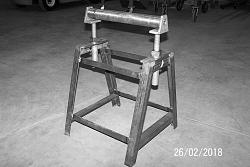
Shaft is captive by 10-32 machine screws at each end. One plug is press fit, slip fit on the other to make bushing replacement easier, as entire roller assembly slips free from the frame. Using two nuts on washers allow leveling in the Y axis after X is corrected.
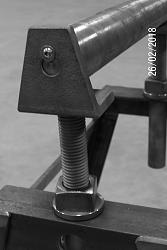
After setting, I dropped a chalkline to represent fixed jaw of saw, so as distance from saw varies, the flat and level planes remain close to correct. It's hidden by shadow in pic, visible by operator though.
This all makes repeated cuts dependable; all pieces now so square, facing or profile milling is eliminated or reduced.


 LinkBack URL
LinkBack URL About LinkBacks
About LinkBacks
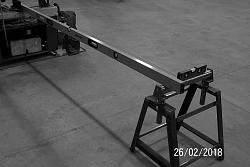


 Reply With Quote
Reply With Quote


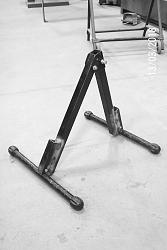
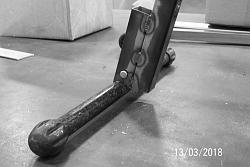
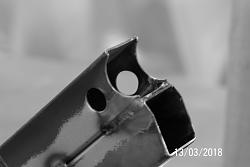
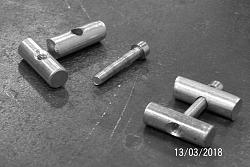


 The nerve!
The nerve! 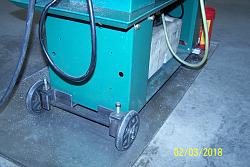
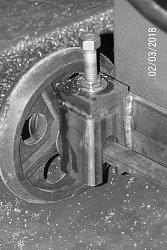
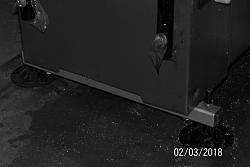

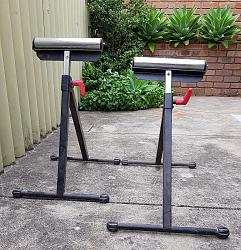




Bookmarks